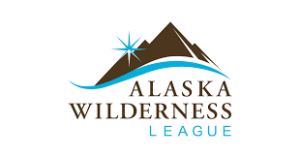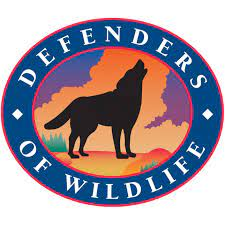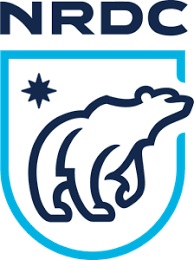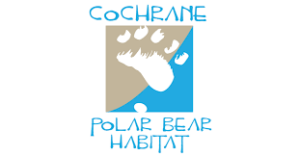9 Best Charities for Protecting Polar Bears (Complete 2024 List)
Impactful Ninja is reader-supported. When you buy through links on our site, we may earn an affiliate commission.
Learn more
Learn more
.
Hey fellow impactful ninja ? You may have noticed that Impactful Ninja is all about providing helpful information to make a positive impact on the world and society. And that we love to link back to where we found all the information for each of our posts. Most of these links are informational-based for you to check out their primary sources with one click. But some of these links are so-called "affiliate links" to products that we recommend. First and foremost, because we believe that they add value to you. For example, when we wrote a post about the environmental impact of long showers, we came across an EPA recommendation to use WaterSense showerheads. So we linked to where you can find them. Or, for many of our posts, we also link to our favorite books on that topic so that you can get a much more holistic overview than one single blog post could provide. And when there is an affiliate program for these products, we sign up for it. For example, as Amazon Associates, we earn from qualifying purchases. First, and most importantly, we still only recommend products that we believe add value for you. When you buy something through one of our affiliate links, we may earn a small commission - but at no additional costs to you. And when you buy something through a link that is not an affiliate link, we won’t receive any commission but we’ll still be happy to have helped you. When we find products that we believe add value to you and the seller has an affiliate program, we sign up for it. When you buy something through one of our affiliate links, we may earn a small commission (at no extra costs to you). And at this point in time, all money is reinvested in sharing the most helpful content with you. This includes all operating costs for running this site and the content creation itself. You may have noticed by the way Impactful Ninja is operated that money is not the driving factor behind it. It is a passion project of mine and I love to share helpful information with you to make a positive impact on the world and society. However, it's a project in that I invest a lot of time and also quite some money. Eventually, my dream is to one day turn this passion project into my full-time job and provide even more helpful information. But that's still a long time to go. Stay impactful,Affiliate Disclosure
Why do we add these product links?
What do these affiliate links mean for you?
What do these affiliate links mean for us?
What does this mean for me personally?
![]()
There are estimated to be 22,000-31,000 polar bears left in the world. This may sound like a lot, but populations are declining fast due to a range of threats including poaching, oil drilling, and climate change. Perhaps the biggest threat facing polar bears is the rapid decline of sea ice. If nothing changes, experts estimate that there is a 70% chance polar bear populations will decline by over a third by 2050. Charities around the world are now recognizing this crisis and are fighting to ensure the survival of polar bears. So we had to ask: What are the best charities for protecting polar bears?
The best charities for protecting polar bears are Polar Bears International and the Born Free Foundation. Charities such as the Arctic Ice Project and the Alaska Wilderness League are working tirelessly to save vital polar bear habitats in the Arctic.
Whether you want to save the Arctic home of polar bears, invest in research to better understand and conserve these animals, or reduce human-polar bear conflict, there is a charity for you. Keep reading to learn more about what the best charities for protecting polar bears are all about, how they work, and what your best way would be to make a contribution.
Here’s What All the Best Charities for Protecting Polar Bears Have in Common
The charities on this list were chosen based on their mission, impact & transparency ratings, and achievements.
They work across the Arctic, from the US to Norway, protecting vital polar bear habitats and working to conserve this keystone species from further decline.
Most of the charities on this list focus their efforts on formulating conservation plans for wild polar bear populations. Others focus their attention on habitat conservation and improving the lives of captive polar bears.
Yet, they all share the same goal; to protect polar bears and their habitats from the range of dangers that are currently threatening them with extinction.
These Are the 9 Best Charities for Protecting Polar Bears in 2024
Below are our favorite charities for protecting polar bears (you can click on their link to directly jump to their section in this article):
Best Charities For Protecting Polar Bears
(At the end of this article we’ll also share our six-step approach on how you can select the best charity to support.)
Polar Bears International: Conserving Polar Bears and Their Sea Ice Home

🔎
Their transparency & ratings:
Polar Bears International has a 4-star rating from Charity Navigator as well as a Platinum Seal of Transparency from GuideStar.
“Working to secure a future for polar bears across the Arctic.”
Polar Bears International
⚒️
What they do:
Polar Bears International works with scientists, non-profits, and technology companies to conduct on-site research projects to better understand the ecology and specific needs of polar bears. For example, they perform studies on polar bear deterrents to ensure their safety, as well as monitor maternal dens. This information is then used to formulate effective conservation management plans. They have also set up a Polar Bear Safe Working Group to establish protocols that will minimize human-polar bear conflict. Furthermore, the charity offers free webcasts and teaching materials to schools to educate children on climate change and polar bear biology through their Education Center.
🚀
What they’ve achieved:
Today, Polar Bears International protects vulnerable polar bears through their network of over 49 zoos and aquariums in Canada, America, and Europe. For example, in 2021, they developed an innovative new technology to detect polar bear dens that are hidden under the snow. This is critically important in conservation efforts to protect vulnerable cubs and their mothers. In addition, they are currently tracking the movements of 13 wild polar bears across Canada through their Polar Bear Tracker to formulate more effective conservation strategies. And, in the same year, they reached over 200,000 people around the world with their educational webcasts and live chats.
✨
Ways to contribute:
You can donate directly to Polar Bears International through their website. You can also support the charity by taking part in one of their awareness events or by symbolically adopting a polar bear.
Born Free Foundation: Ending the Suffering of Captive and Wild Animals

🔎
Their transparency & ratings:
The American branch of the Born Free Foundation has a 3-star rating from Charity Navigator. The charity also has a Platinum Seal of Transparency from GuideStar.
“Working to ensure that all wild animals, whether living in captivity or in the wild, are treated with compassion and respect and are able to live their lives according to their needs.”
Born Free Foundation
⚒️
What they do:
The Born Free Foundation fights for the rights of mistreated and captive animals, including polar bears, through their various campaigns. For example, through their Protecting Native Species from Culling and Hunting program, they run a conflict resolution committee in Canada to prevent conflict between local villages and roaming bear populations. In addition, they liaise with Ontario officials to ban bear hunting across the province. They also run global campaigns to ban circus performances by wild animals and to improve enclosure design in zoos. This is essential as all polar bears in captivity display stress-related behaviors such as head swaying, because of a lack of stimulation and room to move.
🚀
What they’ve achieved:
Since their founding, the Born Free Foundation has invested millions of dollars into polar bear research and conflict reduction across all five range states. Furthermore, they have successfully advocated for the creation of the first-ever circumpolar polar bear management plan that has been signed by all five states where polar bears reside. This sets out a 10-year plan to tackle direct threats to polar bears from shipping, oil, gas, and conflict. In addition, they have successfully pushed for a statement by countries with native polar bear populations to formally recognize the urgent need for global action on climate change.
✨
Ways to contribute:
You can donate directly to the Born Free Foundation on their website. You can also support the charity by purchasing items from their online shop or by volunteering.
Alaska Wilderness League: Fighting to Keep Alaska Wild

🔎
Their transparency & ratings:
The Alaska Wilderness League has a 91% Encompass rating for finance & accountability from Charity Navigator. The charity also has a Platinum Seal of Transparency from GuideStar.
“We work to ensure Alaska’s wild landscapes endure to support vibrant communities and abundant wildlife.”
Alaska Wilderness League
⚒️
What they do:
The Alaska Wilderness League works with like-minded organizations and indigenous populations to protect the natural lands of Alaska and its wildlife, including polar bears. They do this by advocating for government policy reform to better protect vital natural wildlife reserves such as the Arctic National Wildlife Refuge and the National Petroleum Reserve. In addition, they fight against proposed intensive drilling projects that would speed up the melting of ice in the Arctic Ocean, which is home to the entire US population of polar bears.
🚀
What they’ve achieved:
Today, the Alaska Wilderness League protects 23 million acres of wildlands in the Western North Slopes of Alaska, as well as 19.6 million acres of land in Northeast Alaska. These areas house over 200 native species, including threatened polar bears. The latter is also the most important land denning area for US polar bears in winter. Furthermore, in 2021, the charity won a federal court case challenging the proposed development of the Willow drilling project in the National Petroleum Reserve, which would produce three decades of pollution; equivalent to 76 coal-fired power plants.
✨
Ways to contribute:
You can donate directly to the Alaska Wilderness League on their website. You can also support the charity through advocacy or by joining the Wild Giving Society.
Defenders of Wildlife: Prevent Extinction. Protect Habitat

🔎
Their transparency & ratings:
Defenders of Wildlife has a 3-star rating from Charity Navigator as well as a Platinum Seal of Transparency from GuideStar.
“Dedicated to the protection of all native animals and plants in their natural communities.”
Defenders of Wildlife
⚒️
What they do:
Defenders of Wildlife fights for the survival of wild polar bear populations in the Arctic by advocating for the protection of vital habitats against proposed oil and gas developments. They also submit detailed reports on the significant impact that these projects would have on vulnerable polar bears. In addition, the charity works directly with local communities that live near polar bears to reduce animal-human conflict by installing food storage lockers. Defenders of Wildlife also work with numerous other organizations to conduct studies to better understand the correlation between the loss of sea ice and polar bear stress levels, and they work on a global scale to fight climate change by promoting renewable energy development.
🚀
What they’ve achieved:
Since their founding, Defenders of Wildlife has successfully advocated for the protection of 187,000sq miles of critical polar bear habitat in the Arctic. They have also commissioned and published the ‘Sea Bear Under Siege’ report which details the changes to polar bear habitat caused by climate change, as well as recommended actions for federal agencies and communities to formulate effective conservation strategies for the species. Furthermore, the charity is now a leading advocate on Capitol Hill for increased funding for programs to better understand and combat climate change.
✨
Ways to contribute:
You can donate directly to Defenders of Wildlife on their website. You can also support the charity by purchasing items from their online shop or by joining their leadership council.
World Wildlife Fund: Endangered Species Conservation

🔎
Their transparency & ratings:
The World Wildlife Fund has a 3-star rating from Charity Navigator and a Platinum Seal of Transparency from GuideStar.
“To build a future in which people live in harmony with nature”
World Wildlife Fund
⚒️
What they do:
The World Wildlife Fund supports local conservation efforts to protect native polar bear populations in Russia, Alaska, Greenland, and Canada. For example, they work with the Alaska Nanuuq Commission and federal officials to conduct polar bear patrols that use non-lethal methods to keep polar bears out of local villages. They also monitor polar bear populations and track their movements to identify how climate change and other threats are affecting them. They then use this information to formulate conservation plans. In addition, they support researchers to develop new, less invasive, and more cost-effective methods to deliver more reliable data, such as alternatives to standard polar bear ear tags. Furthermore, through their advocacy efforts, they are working with conservationists to oppose oil and gas developments in high-risk areas for polar bears.
🚀
What they’ve achieved:
Since their founding, the World Wildlife Fund has remained committed to protecting polar bear populations across their native habitats. For example, the charity has successfully advocated for a comprehensive statement by countries with polar bear populations to recognize the urgent need for a global response against climate change. They have also convinced all five states with native polar bears to commit to the first-ever circumpolar action plan to protect the species. Furthermore, they supported the design of steel food storage containers so local communities can still store their food outside without the risk of attracting polar bears.
✨
Ways to contribute:
You can donate directly to the World Wildlife Fund through their website. You can also support the charity by symbolically adopting a polar bear or by fundraising.
Natural Resources Defense Council: At the Forefront of the Environmental Movement

🔎
Their transparency & ratings:
The Natural Resources Defense Council has a 4-star rating from Charity Navigator. The charity also holds a Bronze Seal of Transparency from GuideStar.
“Working to safeguard the earth – its people, its plants and animals, and the natural systems on which all life depends.”
Natural Resources Defense Council
⚒️
What they do:
The Natural Resources Defense Council tackles climate change, which is causing the rapid decline of polar bears around the world. They do this by advocating against the use of fossil fuels. They also fight to ban the commercial polar bear skin trade by offering expert analysis to governments and providing supporting evidence in favor of limiting this harmful trade. Furthermore, the charity works with conservation agencies, local businesses, and fisheries in Alaska to prevent the construction of the largest hydroelectric dam in 40 years to be built on the Susitna river, which will affect vulnerable native polar bears. In addition, they fight to add animals and plants to the Endangered Species List to ensure better protection, including polar bears, and educate lawmakers on the economic value of these animals.
🚀
What they’ve achieved:
Today, the Natural Resources Defense Council utilizes the power of over 3 million members and the expertise of more than 700 scientists, lawyers, and policy advocates to protect our natural world and all its inhabitants, including polar bears. For example, thanks to the advocacy efforts of the charity, over 200 nations have now signed the Convention on Biological Diversity, committing them to protect at-risk species such as polar bears. They also helped to secure the John D. Dingell Jr. Conservation, Management, and Recreational Act which safeguards more than 1.3 million acres of natural land and 620 miles of rivers across the US.
✨
Ways to contribute:
You can donate directly to the Natural Resources Defense Council on their website. You can also support the charity by giving a gift membership to the NRDC or through workplace giving.
Freedom For Animals: Ending the Captivity of Wild Animals

🔎
Their transparency & ratings:
According to their financial report, Freedom For Animals spent 87% of their expenditure on charitable activities and 13% on raising funds.
“We believe all animals should live free from exploitation, harm and captivity”
Freedom For Animals
⚒️
What they do:
Freedom For Animals performs undercover investigations and research into zoos, circuses, and the media industry, to ensure all of the establishments are adhering to the highest standards of animal welfare. When they find animals that are not being treated properly, they campaign heavily for change by exposing animal abuse stories through their Shine a Light campaign. Furthermore, through their End the Imprisonment of Polar Bears campaign, they are actively advocating for the improved welfare of the 300 captive polar bears in zoos around the world that suffer from stereotypical behaviors as the result of improper enclosures.
🚀
What they’ve achieved:
Since their founding, Freedom For Animals has exposed the suffering of animals at hundreds of zoos and helped to free the animals from horrific conditions. As a result, they have reduced the number of animals exploited in zoos from hundreds to just a handful and equipped over 20,000 people every year to stand up against animal abuse. For example, in 2015, they exposed the horrific conditions and harsh training methods used by the Amazing Animals company which provides animal actors for several TV shows and large corporations, including an abused polar bear named Zara.
✨
Ways to contribute:
You can donate directly to Freedom For Animals on their website. You can also support the charity by purchasing items from their online shop or by fundraising.
Cochrane Polar Bear Habitat: Providing Sanctuary for Vulnerable Polar Bears

🔎
Their transparency & ratings:
According to their financial report, Cochrane Polar Bear Habitat spent 90% of their expenditure on polar bear care, professional fees, and site maintenance.
“To make a significant contribution to the sustainability of polar bears, using exceptional care standards, engagement through education, and targeted conservation efforts.”
Cochrane Polar Bear Habitat
⚒️
What they do:
Cochrane Polar Bear Habitat is a 24-acre rescue and rehabilitation center dedicated to caring for vulnerable and abused polar bears. The bears that come into their care are given a nutritious diet, space to roam, and enrichment to facilitate trust between the animals and the care team. The center is located in Cochrane, Ontario, and also acts as a visitor and education site for the public. Furthermore, the charity collaborates with conservation and research institutions across Canada to learn more about polar bears so they can improve standards and care for them around the world.
🚀
What they’ve achieved:
Since their founding, the Cochrane Polar Bear Habitat has provided a safe home for 9 polar bears in need. Throughout their lives, these bears have received mental and physical rehabilitation, as well as loving care because they lack the necessary hunting skills to be returned to the wild. In addition, the charity has been involved in 12 studies to better understand the behavior and biology of polar bears, including a study to determine how much energy polar bears use as they grow. All studies on the polar bears in their care are non-invasive or the bears can voluntarily take part.
✨
Ways to contribute:
You can donate directly to the Cochrane Polar Bear Habitat on their website. You can also support the charity by purchasing items from their bear store or by visiting their sanctuary.
Arctic Ice Project: Restoring the Arctic

🔎
Their transparency & ratings:
The Arctic Ice Project has a 71% Encompass rating for finance & accountability from Charity Navigator. The charity also has a Bronze Seal of Transparency from GuideStar.
“Working to slow climate change by restoring ice in the Arctic.”
Arctic Ice Project
⚒️
What they do:
The Arctic Ice Project works with organizations and scientists around the world to formulate innovative strategies to save the Arctic ice that polar bears rely on. To date, the most promising solution they have researched is the use of microscopic beads to combat the effects of climate change on ice melting; a process known as Surface Albedo Modification. The proposed project involves deploying a thin layer of small, hollow, glass beads strategically across chosen regions of the Arctic. This will improve the reflectibility of sea ice by mimicking the natural process of reflecting solar energy out of our atmosphere to slow Arctic ice melt.
🚀
What they’ve achieved:
To date, the Arctic Ice Project has reached Technology Readiness Level 3 with their microbead solution to Arctic Ice melt, which is experimental proof of concept. They have also signed a multi-million dollar contract with SINTEF, one of the largest independent research organizations in Europe for initial performance testing in Norway.
✨
Ways to contribute:
You can donate directly to the Arctic Ice Project on their website. You can also support the charity by attending one of their fundraising and awareness events.
How Can You Select the Best Charities to Support?
The charities on the list are, we deem, the best charities for protecting polar bears. However, you may have a particular charity you want to support. Let’s look at what you can do to ensure your contribution has the most significant impact.
- Check out the charity website. Charities that are worthy of your donations are transparent in their mission and their figures. Familiarize yourself with their history, mission, and values. Their website usually is the best place to start.
- Identify the charity’s mission. Without a goal, the charity is likely to fail. If the charity’s mission isn’t clear, it’s probably worth looking for a charity that does have a clear mission.
- Check if the charity has measurable goals. An effective charity has clear goals. You want to know your donation will help the charity reach its goals. But if it doesn’t have targets, it’s likely to fail or squander your gift. The charity should be able to account for its spending and supply evidence of the work they do.
- Assess the successes or goals the charity has achieved. You wouldn’t invest in a business if it kept missing its targets. In the same way, charities are like this too. If no one is assessing a charity’s progress in reaching its targets, the chances are they’re not making a substantial positive change.
- Check the charity’s financials and stats. Trustworthy organizations will publish financial statements and reports each year. Some might be exempt from having to do so, but they should be able to provide them to public members who are interested in donating.
- Locate sources who work with or benefit from the charity. Word of mouth and first-hand experience of a charity’s work lets you know the charity’s quality. If you’re able to do so, check out the charity for yourself or speak to someone familiar with it. This way, your donation will go to the right place.
How Can You Best Support These Charities?
After you’ve made your decision, it’s time for you to decide on how you’d like to help the charities you’ve chosen. Check how you can help – each charity runs specific programs that have unique aims. Find out what the aim of such programs is and whether they are right for you.
Here are a few ways you can help your chosen charity:
- Donate money. You can find donation pages on the website of most charities. Your donation can be a one-time payment, or you can set it to be deducted regularly at different intervals. You can mostly pay via credit card, but some charities also take PayPal or Bitcoin payments.
- Buy their official merchandise. The charities can also raise money by selling merchandise. So, you can support them by buying the mugs, shirts, caps, pens, pencils, and any other such items they may be selling. Ideally, you should buy as much as you can to share and spread the word about the charity’s activities.
- Engage in volunteer work. As you’ve seen from our descriptions above, some charities engage in a lot of local and grassroots programs. You can help by taking on and organizing the program in your local area.
- Help their fundraising efforts. You can spread the word about the charity in your workplace, school, church, etc., and hold creative fundraising drives on social media or offline within your small circles.
- Share their stories. Most charities have compelling stories that you can share with your audience to attract more people to the cause.
Final Thoughts
Now it is up to you to select the charity that resonates most with you. And whichever charity you end up choosing and contributing to, we are sure that they will immensely appreciate your support. Hopefully, the information within this article has made this selection process a bit easier for you to support charities dedicated to protecting polar bears – based on the causes that matter most to you.
Stay impactful,

PS: Finally, I want to leave you with a thought-provoking TED talk from Dan Pallotta, a leading philanthropic activist and fundraiser, about what is wrong with the way we think about charities – and what we can do about it:
Sources
- Sources in the same order as they appear in the article above
- Polar Bears International: Home page
- Polar Bears International: Our Mission, History, & Values
- Charity Navigator: Polar Bears International
- GuideStar: Polar Bears International
- Polar Bears International: Research
- Polar Bears International: Human-Bear Coexistence
- Polar Bears International: Den Research
- Polar Bears International: Management
- Polar Bears International: Teaching & Learning Materials
- Polar Bears International: Education Center
- Polar Bears International: Annual Report 2021
- Polar Bears International: Polar Bear Tracker
- Polar Bears International: Donate
- Polar Bears International: Awareness Events
- Polar Bears International: Shop
- Born Free Foundation: Home page
- Charity Navigator: Born Free Foundation
- GuideStar: Born Free Foundation
- Born Free Foundation: Campaigns
- Born Free Foundation: Coexisting with Wildlife
- Born Free Foundation: Animals in Captivity
- Born Free Foundation: Arctic Nations commit to international plan for polar bears
- Born Free Foundation: Polar Bear
- Born Free Foundation: Donate
- Born Free Foundation: Shop
- Born Free Foundation: Volunteering
- Alaska Wilderness League: Home page
- Charity Navigator: Alaska Wilderness League
- GuideStar: Alaska Wilderness League
- Alaska Wilderness League: Arctic Refuge
- Alaska Wilderness League: National Petroleum Reserve
- Alaska Wilderness League: Arctic Ocean
- Alaska Wilderness League: Donate
- Alaska Wilderness League: Advocacy Toolkit
- Alaska Wilderness League: Wild Giving Society
- Defenders of Wildlife: Home page
- Defenders of Wildlife: About Us
- Charity Navigator: Defenders of Wildlife
- GuideStar: Defenders of Wildlife
- Defenders of Wildlife: Arctic
- Defenders of Wildlife: Polar Bear
- Defenders of Wildlife: Polar Bears in a Rapidly Changing Arctic
- Defenders of Wildlife: Coexisting with Polar Bears
- Defenders of Wildlife: Combating Climate Change
- Defenders of Wildlife: Donate
- Defenders of Wildlife: Shop
- Defenders of Wildlife: Leadership Council
- World Wildlife Fund: Home page
- World Wildlife Fund: About Us
- Charity Navigator: World Wildlife Fund
- GuideStar: World Wildlife Fund
- World Wildlife Fund: Polar Bear
- World Wildlife Fund: An Arctic village prepares for a furry impact
- World Wildlife Fund: A design firm helps polar bear experts get creative with tracking technology
- World Wildlife Fund: Leaders commit to conservation measures at Polar Bear Forum
- World Wildlife Fund: Arctic Nations commit to international plan for polar bears
- World Wildlife Fund: Donate
- World Wildlife Fund: Adopt a Polar Bear
- World Wildlife Fund: Fundraise
- Natural Resources Defense Council: Home page
- Charity Navigator: Natural Resources Defense Council
- GuideStar: Natural Resources Defense Council
- Natural Resources Defense Council: Climate Change
- Natural Resources Defense Council: Reduce Fossil Fuels
- Natural Resources Defense Council: Safeguard Polar Bears by Eliminating Trade in Their Parts
- Natural Resources Defense Council: Protect Ecosystems and Fisheries
- Natural Resources Defense Council: Preserve the Endangered Species Act
- Natural Resources Defense Council: About Us
- Natural Resources Defense Council: Fighting Polluters Since 1970
- Natural Resources Defense Council: Donate
- Natural Resources Defense Council: Give a Gift Membership
- Natural Resources Defense Council: Workplace Giving
- Freedom For Animals: Home page
- Charity Commission For England and Wales: Freedom For Animals
- Freedom For Animals: Mission
- Freedom For Animals: Zoos
- Freedom For Animals: Circuses
- Freedom For Animals: Shine a Light
- Freedom For Animals: End the Imprisonment of Polar Bears
- Freedom For Animals: Amazing Animals
- Freedom For Animals: Snapshot
- Freedom For Animals: Donate
- Freedom For Animals: Shop
- Freedom For Animals: Fundraising
- Cochrane Polar Bear Habitat: Home page
- IRS.Gov: Cochrane Polar Bear Habitat Form 990
- Cochrane Polar Bear Habitat: About Us
- Cochrane Polar Bear Habitat: Our Bears
- Cochrane Polar Bear Habitat: Our Team
- Cochrane Polar Bear Habitat: Visit
- Cochrane Polar Bear Habitat: Conservation
- Cochrane Polar Bear Habitat: Donate
- Cochrane Polar Bear Habitat: Shop
- Arctic Ice Project: Home page
- Charity Navigator: Arctic Ice Project
- GuideStar: Arctic Ice Project
- Arctic Ice Project: The Project
- Arctic Ice Project: FAQ
- Arctic Ice Project: Technology Readiness Level
- Arctic Ice Project: Donate
- Arctic Ice Project: Upcoming Events














